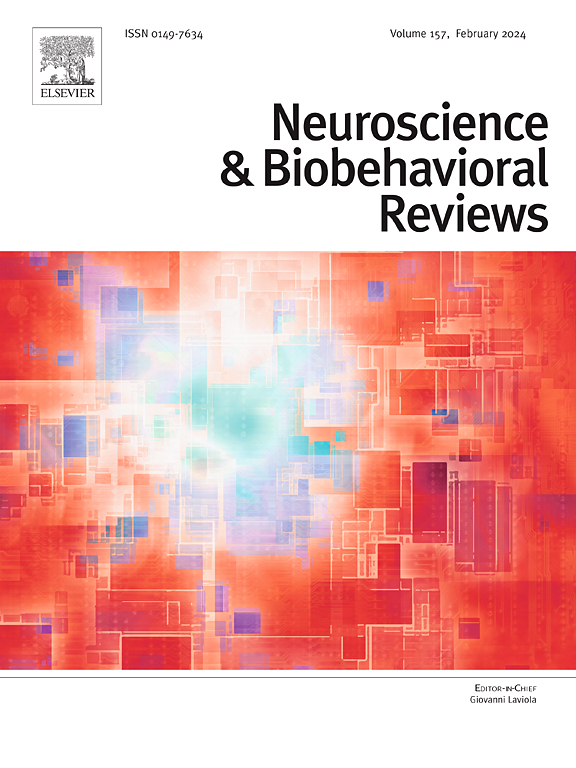额颞叶痴呆中的小脑:从被忽视的旁观者到潜在的神经调节目标。叙述性回顾
IF 7.5
1区 医学
Q1 BEHAVIORAL SCIENCES
引用次数: 0
摘要
背景:虽然额颞叶痴呆(FTD)的皮质变化有充分的文献记载,但与这些区域密切相关的小脑的作用仍不清楚。目的从临床、遗传学、影像学、神经病理学和神经生理学等方面为FTD的小脑受累提供证据。此外,我们寻找证据支持小脑无创脑刺激(NIBS)在FTD诊断和治疗目的的应用。方法使用MEDLINE(通过PubMed)、Scopus和Web of Science数据库进行文献综述。结果我们强调了特定小脑区域的参与,这些区域可以区分每种FTD亚型,并可能解释一些特征性症状。此外,我们强调了FTD遗传改变的特殊性。最后,我们概述了支持小脑在FTD发病机制中的作用的神经生理学证据。结论小脑在FTD频谱中起关键作用。此外,可以推测,小脑调节可以恢复FTD患者典型受损的神经元间皮质内回路,正如其他神经退行性疾病中已经显示的那样,为临床改善和临床试验提供了基本的结果指标。本文章由计算机程序翻译,如有差异,请以英文原文为准。
The cerebellum in frontotemporal dementia: From neglected bystander to potential neuromodulatory target. A narrative review
Background
Though cortical changes in frontotemporal dementia (FTD) are well-documented, the cerebellum's role, closely linked to these areas, remains unclear.
Objectives
To provide evidence on cerebellar involvement in FTD across clinical, genetic, imaging, neuropathological, and neurophysiological perspectives. Additionally, we sought evidence supporting the application of cerebellar non-invasive brain stimulation (NIBS) in FTD for both diagnostic and therapeutic purposes.
Methods
We performed a literature review using MEDLINE (via PubMed), Scopus, and Web of Science databases.
Results
We emphasized the involvement of specific cerebellar regions which differentiate each FTD subtypes and may account for some of the characteristic symptoms. Furthermore, we highlighted peculiarities in FTD genetic alterations. Finally, we outlined neurophysiological evidence supporting a role for the cerebellum in FTD pathogenesis.
Conclusion
The cerebellum is critically involved in the FTD spectrum. Moreover, it can be speculated that cerebellar modulation, as already shown in other neurodegenerative disorders, could restore the interneuronal intracortical circuits typically impaired in FTD patients, providing clinical improvements and fundamental outcome measures in clinical trials.
求助全文
通过发布文献求助,成功后即可免费获取论文全文。
去求助
来源期刊
CiteScore
14.20
自引率
3.70%
发文量
466
审稿时长
6 months
期刊介绍:
The official journal of the International Behavioral Neuroscience Society publishes original and significant review articles that explore the intersection between neuroscience and the study of psychological processes and behavior. The journal also welcomes articles that primarily focus on psychological processes and behavior, as long as they have relevance to one or more areas of neuroscience.

 求助内容:
求助内容: 应助结果提醒方式:
应助结果提醒方式:


